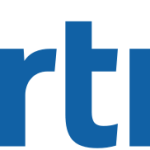- Industry: Consulting
- Number of terms: 1807
- Number of blossaries: 2
- Company Profile:
Gartner delivers technology research to global technology business leaders to make informed decisions on key initiatives.
Data center outsourcing (DCO) is a multiyear, annuity contract or relationship involving the day-to-day management responsibility for operating server or host platforms, including distributed servers and storage. Services include any combination (or all) of professional services and product support, as they relate to the ongoing management of computing and storage resources.
Industry:Technology
Data center infrastructure management (DCIM) tools monitor, measure, manage and/or control data center utilization and energy consumption of all IT-related equipment (such as servers, storage and network switches) and facility infrastructure components (such as power distribution units (PDUs) and computer room air conditioners (CRACs)).
Industry:Technology
The term “data center bridging” (DCB) refers to a collection of proposed standards designed to transform Ethernet into a lossless network with efficient Layer 2 multipath forwarding. DCB (formerly called converged enhanced Ethernet (CEE)) depends on a handful of standards that are being developed by three different standards bodies: the American National Standards Institute, the Institute of Electrical and Electronics Engineers and the Internet Engineering Task Force (IETF). It is also known as Data Center Ethernet (DCE).
Industry:Technology
The data center is the department in an enterprise that houses and maintains back-end information technology (IT) systems and data stores—its mainframes, servers and databases. In the days of large, centralized IT operations, this department and all the systems resided in one physical place, hence the name data center.
With today’s more distributed computing methods, single data center sites are still common, but are becoming less so. The term continues to be used to refer to the department that has responsibility for these systems, no matter how dispersed they are.
Market and industry trends are changing the way enterprises approach their data center strategies. Several factors are driving enterprises to look beyond traditional technology infrastructure silos and transform the way they view their data center environment and business processes. These include aging data center infrastructures that are at risk for not meeting future business requirements, an ongoing cost-consciousness, and the need to be more energy-efficient.
Many enterprises are looking to virtualization, fabric-based infrastructure, modular designs and cloud computing as they explore how best to optimize their resources.
Industry:Technology
DAPP vendors are those that provide healthcare value-added analytic applications to support analysis of administrative data for the purposes of network management, actuarial and underwriting functions, medical management and performance measurement — including Health Plan Employer Data and Information Set (HEDIS) reporting.
Industry:Technology
Dashboards are a reporting mechanism that aggregate and display metrics and key performance indicators (KPIs), enabling them to be examined at a glance by all manner of users before further exploration via additional business analytics (BA) tools. Dashboards help improve decision making by revealing and communicating in-context insight into business performance, displaying KPIs or business metrics using intuitive visualization, including charts, dials, gauges and “traffic lights” that indicate the progress of KPIs toward defined targets.
Industry:Technology
DASH7 is a standard, promoted by the DASH7 Alliance that leverages the 433Mhz band unlicensed spectrum, supporting the networking of sensors up to 2 km apart and in-building positioning within 1 meter. The battery life for modules can be several years, with DASH7 supporting AES 128-bit public key encryption and data rates of 200 kbps.
Industry:Technology
Fiber-optic cable deployments that are not yet being used to carry network traffic. (The word “dark” refers to the fact that no light is passing through the optical fibers.)
Industry:Technology
Gartner defines dark data as the information assets organizations collect, process and store during regular business activities, but generally fail to use for other purposes (for example, analytics, business relationships and direct monetizing). Similar to dark matter in physics, dark data often comprises most organizations’ universe of information assets. Thus, organizations often retain dark data for compliance purposes only. Storing and securing data typically incurs more expense (and sometimes greater risk) than value.
Industry:Technology
The connection of multiple devices in a serial fashion. An advantage of daisy-chaining is savings in transmission facilities. A disadvantage is that if a device malfunctions, all of the devices daisy-chained behind it are disabled.
Industry:Technology
